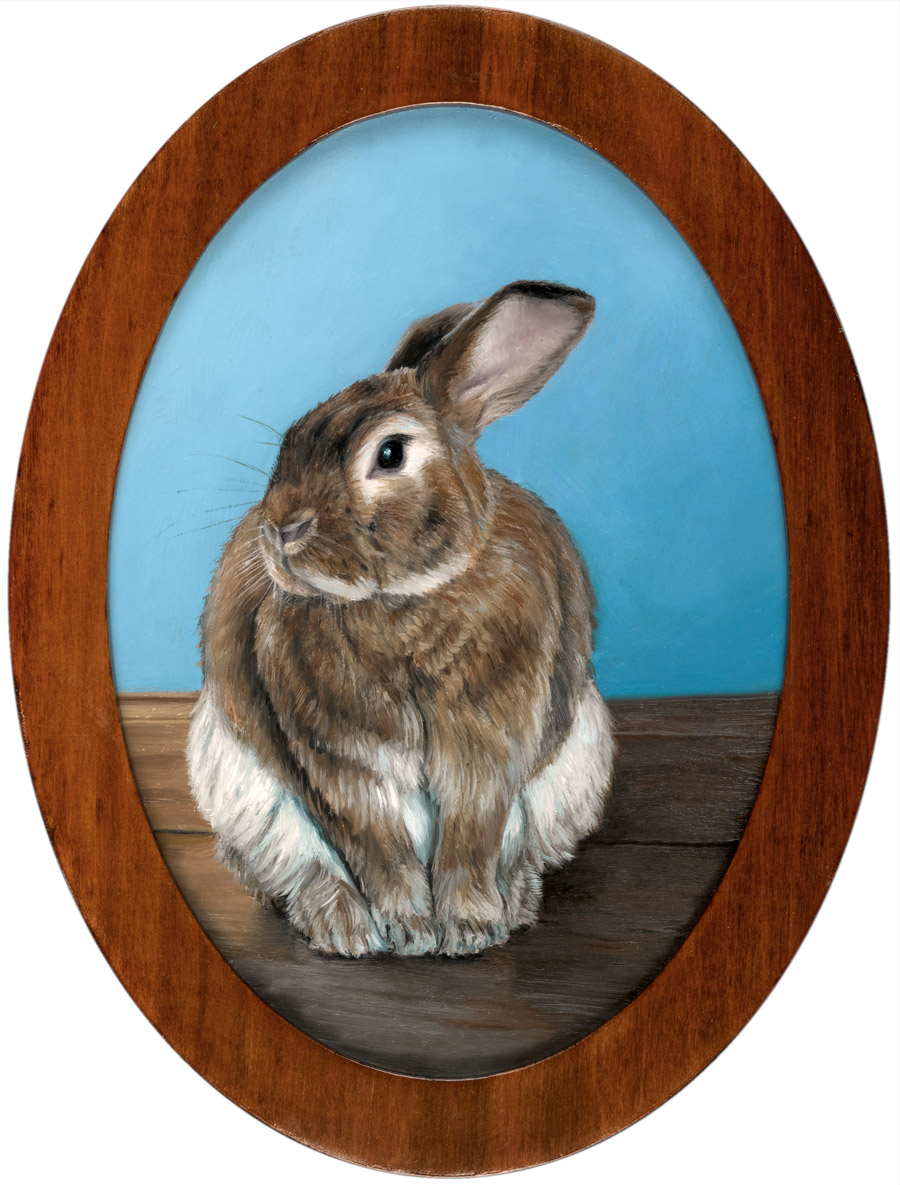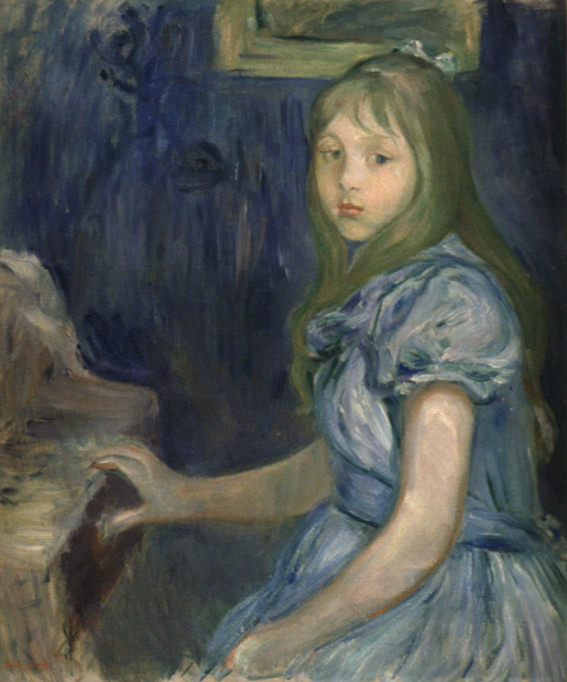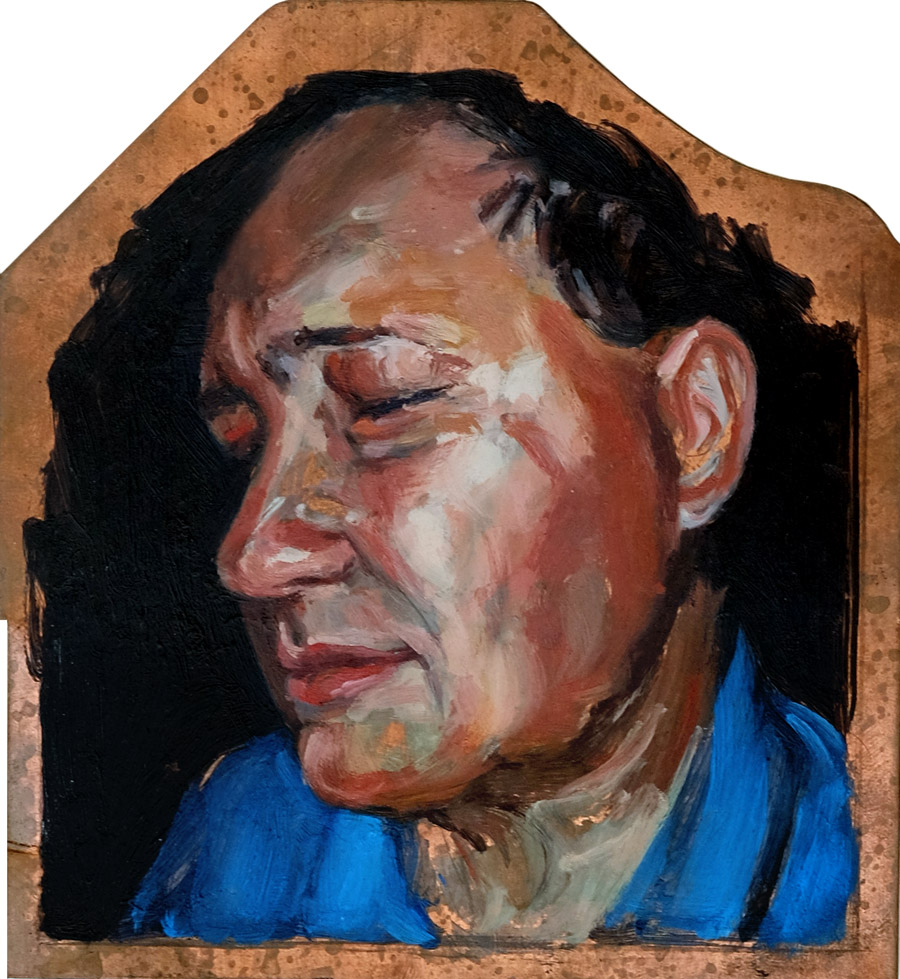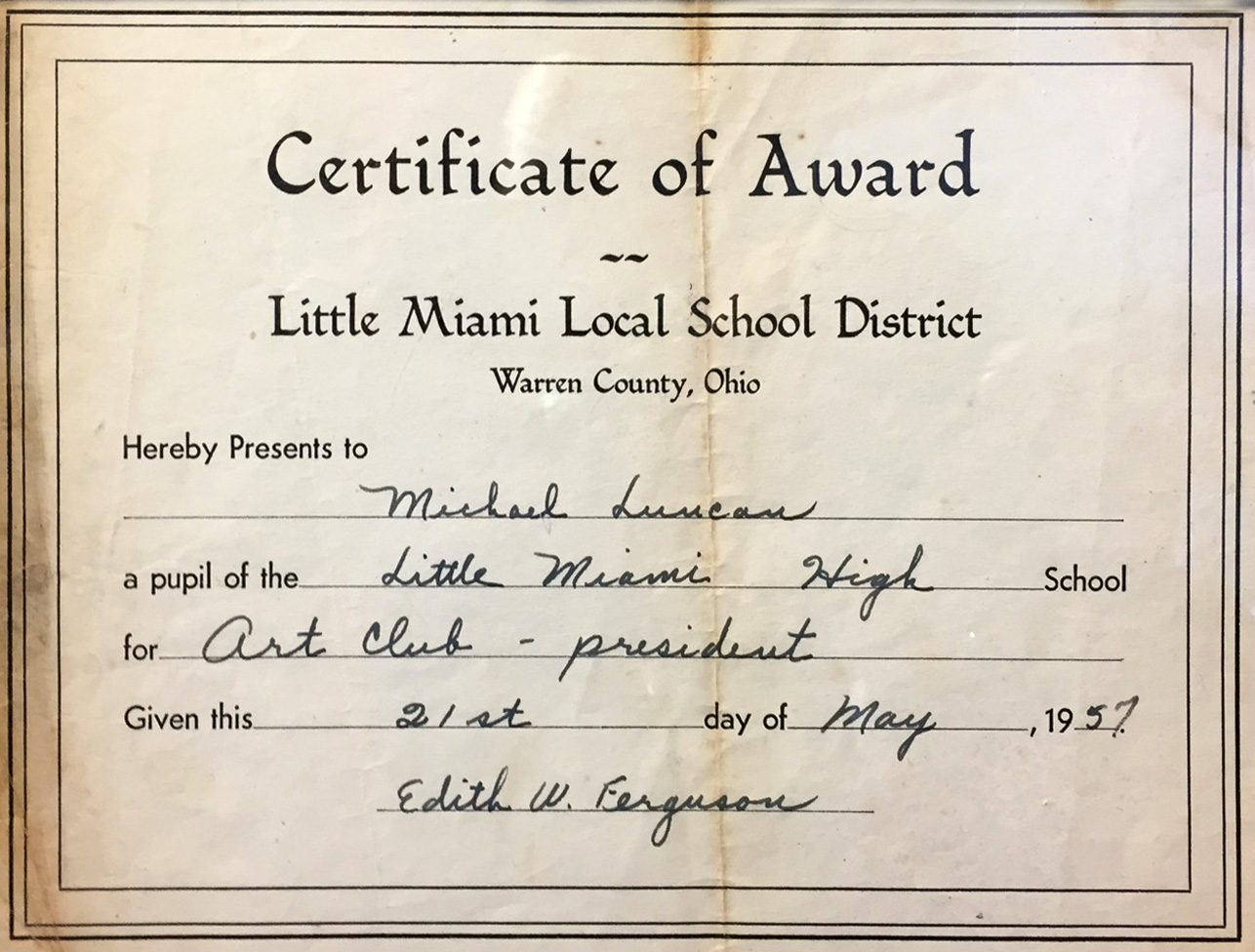My fourth Monthly Miniature is featured with a phthalo blue background, a color long excluded from my palette.
How embarrassing that I was afraid of a tube of paint. I like to think of myself as not really afraid of anything, but I gave my last tube of phthalo blue away many years ago because I was afraid it would invade my paintings.
Phthalo blue is a relatively new pigment, accidentally discovered and rediscovered in the lab before its potential was finally recognized by the company Scottish Dyes in the early 1900’s. It was introduced as an artist pigment in the mid 1930’s and has been highly valued ever since for it’s resistance to fading, intense color, and high tinting strength.
That high tinting strength is the source of my fears. You have to understand how invasive phthalo blue is: during the course of a painting, hues naturally blend and migrate. While most pigments can be blended into entirely new colors, either dominating and being dominated by other hues, phthalo blue tints so powerfully that it is extremely difficult to blend away in that manner. If it’s on the pallet, I can see it in the painting everywhere! Typically as a figurative painter, creating warm skin tones helps give the person a more vibrant, lively feel, so my general rule has been to only use Cobalt Blue (which has a weak tinting strength) so that the warm tones are easy to pull forward with a greater sense of control. Whereas a tiny bit of phthalo blue on the pallet has a way of invading everything and can quickly force you to scrape your entire palette clean and start again, thus the expulsion of the color from my studio.
Two paintings changed my perspective, and now I can’t imagine working without it.
I spend a great deal of time at the Seattle Art Museum, where I help create mounts that stabilize objects on display and mitigate earthquake risk. And though I’m mostly working with sculptural pieces, I love spending time with the paintings. March of 2014 brought “France: Inside and Out“, an ongoing show in the fourth floor galleries (co-curated by Chiyo Ishikawa and Julie Emerson), and though the portrait below was painted before the advent of phthalo blue, it started me questioning my fear of a dominating cool pigment in a portrait. The blue is everywhere in this painting: the frame, the hair, and the skin, not to mention the blue dress and background. But at the same time, it’s neither monochromatic nor muddy. This painting planted the thought that maybe it’s okay to let go of some control and let the paint surprise me.
That planted thought found unexpectedly fertile ground this February, when my partner Evan and I showed up at his sister Molly’s small farm in Arlington, WA just before dusk. I wanted to begin a series that actively connected the figure and landscape, and we had come to gather images. The winter fog rolled into the valley, across the fields, and all around the trees, barns, and all of us. The sun had begun to set, turning the foggy hills a deep and vibrant blue, and mysterious lights haunted in the distance. As a subject, Molly is as dramatic as the background that evening, and as we finished, I couldn’t wait to begin the new series.
But as I began to paint, I tried blue after blue but none of them worked. Nothing came close to the shockingly blue sky we had witnessed. I finally conceded that I needed phthalo blue, and I bought my first tube of it in over 10 years. It delivered where other blues had fallen short, and although I only used it in the background in this painting, it helped me shake off some of my longtime inhibitions. In my fourth Monthly Miniature, I also used phthalo blue, and if you look closely, I have used it much more freely, adding it to the floor and the figure. Adding it in the highlights in Charlie’s soft belly fur was truly freeing and a moment of joy. Instead of fearing the phthalo invasion, I invited it in and listened to what it had to say. I’m pleased to say it had some nice ideas, and we’ll be working together again soon.




